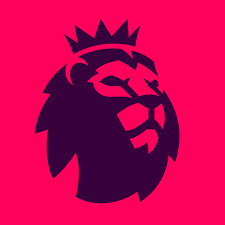Hidden Meanings Behind Football Club Logos Across Every Major League

Explore the surprising stories, symbols, and secrets behind football club logos in every major league—from iconic badges to cultural heritage.
Hidden Meanings Behind Football Club Logos
Logos are more than just visual identifiers. In football, they are powerful symbols of pride, heritage, and identity. Every crest you see stitched onto a jersey or waving in a stadium tells a story—one that often reflects the values, culture, and history of a club and its city. From the roaring lions to mysterious initials and religious symbolism, football club logos hide fascinating secrets that even some fans don’t fully understand.
Whether you’re a die-hard supporter of a Premier League titan or a passionate follower of a local MQM Bet league side, understanding the meaning behind your club’s badge can deepen your connection to the game. In this article, we uncover the hidden meanings and historical origins behind some of the most iconic football club logos from major leagues around the world.
1. Manchester United (Premier League – England)
At first glance, Manchester United’s logo might just seem like a medieval crest. But every detail has meaning. The ship at the top represents Manchester’s industrial shipping past, and the red devil holding a trident symbolizes the club’s nickname, “The Red Devils,” adopted in the 1960s. The devil’s inclusion was intended to give the club a more intimidating identity in European league football.
2. Juventus (Serie A – Italy)
Juventus rebranded in 2017, replacing their traditional crest with a bold, minimalist “J”. The double “J” represents both the club’s initial and a stylized shield, symbolizing modernity and the club’s forward-thinking identity. It stirred controversy but helped build a sleek global brand for one of Italy’s most dominant league teams.
3. Real Madrid (La Liga – Spain)
Real Madrid’s logo features a crown, added in 1920 when King Alfonso XIII granted the club royal status—hence “Real,” meaning “royal.” The intertwined initials “MCF” stand for Madrid Club de Fútbol, while the crown was temporarily removed during Spain’s Second Republic, reflecting how politics can influence football even at the league badge level.
4. Ajax (Eredivisie – Netherlands)
Ajax’s crest features the Greek hero Ajax, drawn with just 11 lines to symbolize the 11 players on the pitch. This stylized representation reflects the club’s proud classical roots and emphasis on intelligence, precision, and artistry—values that have guided their dominance in the Dutch league.
5. Paris Saint-Germain (Ligue 1 – France)
PSG’s logo features the Eiffel Tower and a fleur-de-lis, a traditional French symbol. Below the tower lies a cradle, a nod to King Louis XIV, who was born in Saint-Germain. This blend of royal symbolism and Parisian pride creates one of the most stylish and historical logos in league football.
6. Al Hilal (Saudi Pro League – Saudi Arabia)
One of the most successful clubs in the Saudi league, Al Hilal’s logo features a crescent moon, an important symbol in Islamic culture. The blue and white colors reflect the club’s identity, and the football embedded within the moon connects tradition to sport. The clean design highlights the club’s regional dominance and modern ambitions.
7. Barcelona (La Liga – Spain)
Barcelona’s crest is a symbol-rich masterpiece. The top left features the St. George Cross, the patron saint of Catalonia. Next to it is the Catalan flag, representing the club’s deep local identity. The lower half showcases the club’s blue and maroon colors and a football, symbolizing unity between culture and sport in the league.
8. Feyenoord (Eredivisie – Netherlands)
Feyenoord’s badge is relatively simple, with a red and white circle and the letter “F.” Yet, its minimalism is rooted in strength and identity, reflecting Rotterdam’s resilience, especially post-WWII. The bold design has become a beacon for fans in the Dutch league who pride themselves on grit and loyalty.
9. AS Roma (Serie A – Italy)
Roma’s crest shows the mythical she-wolf nursing Romulus and Remus—the founders of Rome. This ancient symbol connects the club directly to the city’s legendary origins. Every time AS Roma takes the field, they carry the weight of Rome’s entire mythos—a deep cultural reference unique among league logos.
10. Al Nassr (Saudi Pro League – Saudi Arabia)
Al Nassr’s badge features a map of the Arabian Peninsula in yellow and blue, symbolizing ambition and heritage. The design underlines the club’s goal to represent the entire region, not just a city. It stands as a symbol of unity and excellence in the Saudi league.
11. Inter Milan (Serie A – Italy)
Inter Milan’s crest features the interlocked initials “FCIM” in a circular design. Originally designed by a student in 1908, the circular form signifies unity, while the gold, black, and blue represent elegance, strength, and Milan’s night sky. It’s one of the most recognized logos in league football worldwide.
12. Liverpool (Premier League – England)
The Liver bird—part eagle, part cormorant—is central to Liverpool’s logo and the city’s identity. Above it lies the Shankly Gates with the famous phrase, “You’ll Never Walk Alone.” The two flames on either side honor the 96 fans who died in the Hillsborough disaster, tying tragedy and unity into the league identity.
13. Olympique Lyonnais (Ligue 1 – France)
Lyon’s lion logo represents both strength and a direct link to the city’s ancient coat of arms. It’s a symbol of power and pride for a club that emerged as a dominant force in French league football in the 2000s.
14. Atlético Madrid (La Liga – Spain)
Atlético’s badge includes a bear and a strawberry tree—symbols found in Madrid’s coat of arms. The seven stars represent the seven provinces of Madrid. Every detail connects the club to the city’s identity, making it a proud emblem in Spanish league culture.
15. PSV Eindhoven (Eredivisie – Netherlands)
PSV’s logo resembles a waving flag, with red and white stripes representing the city of Eindhoven. The oval shape and gold trim give it a vintage flair, and the letters stand for Philips Sport Vereniging, underlining its corporate and community origins—uniquely Eredivisie.
16. Marseille (Ligue 1 – France)
The letters “OM” are entwined artistically, with the club’s motto “Droit au But” (“Straight to the Goal”) beneath. This slogan reflects the club’s attacking philosophy and ambition—an ethos that defines their place in league history.
Why Football Logos Matter in Every League
Football logos aren’t just for branding—they’re vessels of history, passion, and storytelling. Every curve, symbol, and color choice tells a story that often spans decades or centuries. Across every league, these emblems connect generations of fans, carrying the soul of clubs through victories, heartbreaks, and everything in between.
Understanding the hidden meanings behind club logos enriches your appreciation of football as more than a sport—it’s a living history.
Show Your Loyalty: Support Your League
Every badge has a story. Whether it’s the lion of Lyon, the ship of Manchester, or the wolf of Rome, these symbols bind fans together. So next time you put on your club’s jersey or raise your scarf in the stands, remember the legacy you’re carrying.
Support your league and your club’s identity—because football is more than a game. It’s your history, your pride, and your passion.




